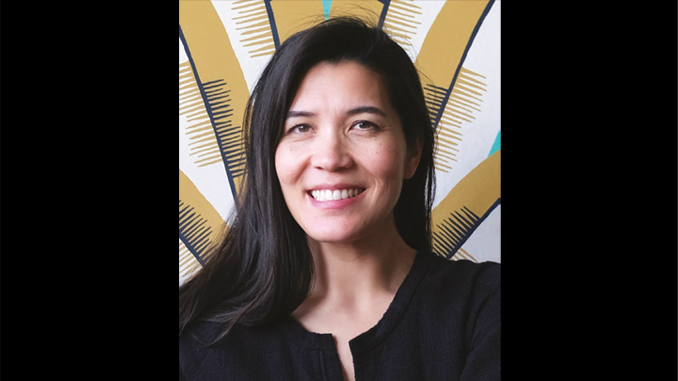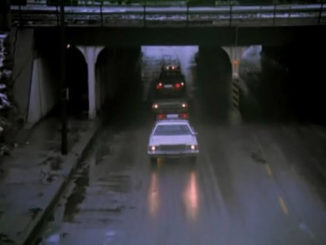
By Rob Feld
In cutting the feature “American F iction,” Hilda Rasula, ACE, had a powerful weapon: The performance from lead actor Jeffrey Wright.
“American Fiction,” Cord Jefferson’s screen adaptation of Percival Everett’s novel “Erasure,” is among the most-acclaimed films of 2023. The most subtle expression in Wright’s face could anchor a complex scene that sought to bridge drama and satire, but the calibration of tone and timing needed to be just right. For a relatively low-budget film offering limited coverage to work with, there was a good deal of massaging to be done to leverage the treasures Wright gave her.

“American Fiction” tells the story of Thelonious “Monk” Ellison (Wright), a frequently acerbic, respected novelist and professor of English literature, who has been struggling with the stereotyped tales the publishing industry demands from him as a Black author. His nuanced stories, devoid of pandering thuggish ghetto tropes, haven’t sold a book in years—they aren’t “Black enough.” What’s more, his reaction to his students’ cultural sensitivities lands him in trouble with his department and leads to a forced sabbatical. In a fit of frustration, to prove his point, Monk pens an outlandish “Black” book under a pseudonym, which surprisingly takes off, putting even more pressure on his sense of integrity versus his need to financially support his ailing mother.
Rasula’s edits lean into the performance-driven storytelling and satirical humor, while threading a needle between satirical humor and drama. Of key importance to landing the film’s explosive and unexpected ending was balancing the storyline of Monk’s angst-ridden professional life with crises transpiring at his family home. Even with a strong script, clear directorial vision, and a brilliant cast, the key to making this story fly was found in the edit.
CineMontage: Finding the voice of this film must have been an exploration. What were your early conversations like with the director, Cord Jefferson?
Hilda Rasula: Cord had a strong sense of the movie he wanted to make and why he was making it, which is so helpful when you’re cutting. We talked about trying to make a movie that, despite its satirical element, was operating on a close-to-the-ground, human level. It isn’t a Mike Leigh, kitchen-sink vibe, but we wanted to find an everyday authenticity in the performances. We wanted those relationships to feel lived-in, and we talked about finding that in some of the more dramatic scenes to balance out some of the absurdities of plot and satire. I don’t think we ever deviated from the hope of making a humanist film. We knew what we were going for tonally, but finding it was another thing, and sometimes [it was] laborious to nail it. How comedic is too much? Where is the comedy leaning towards farce? How broad can this go before the scene starts to collapse under the weight of a tone that’s getting too broad or too farcical? How far can it swing in this direction to get the maximum laughs possible, but then make sure that we’re not going so far in that direction that we can’t come back to some of the darker drama? It was a delicate, fine balance.
‘It was a tight schedule, so there wasn’t a lot of coverage.’

CineMontage: Can you think of an example where you were testing those boundaries?
Hilda Rasula: I think where we were playing with it in the storyline around Monk’s book, like those scenes in Arthur’s office where he is talking to publishers on the phone and comes up with the alternate title. We had options around how big to swing it with these amazing runs of improvisation, where they were doing wholly other things. They’re such gifted performers but we needed to play with the balance of how big we wanted the comedy to get. It became clear to me fairly early on that we needed to have the balances tip more towards Monk and play a lot of things off of Jeffrey’s expressions. By tipping the scales towards Jeffrey’s face, we could do a lot of comic timing manipulation with the dialogue. When do you have a straight man as good as Jeffrey Wright? He can do tightly wound, stillness, stillness with a glimmer of sardonic humor. He can do a tiny twitch of his eye or his mouth that suggests his frustration with the situation, but in a really subtle way that ends up playing as the joke. There is a merry-go-round of absurdity happening around him, and those scenes took some balancing to realize that it was in Jeffrey’s face that the humor was landing. He’s a genius, in full command of his craft.
CineMontage: Can you connect that way of using performance to the type of coverage you were receiving?
Hilda Rasula: They were shooting on a tight schedule without the luxury of time and money, so there wasn’t a lot of coverage. That just meant that I had to drill even harder into the truth of the performances. It is a performance-driven film so there’s nothing to hide behind. There are no grand set pieces that would let you play a little sleight of hand with the audience. You’re moving from one talky, performance-driven scene to another, and each one has to work to keep things moving forward and for you to believe in these characters. At times, it was a highwire act to find the truth of the scene with the coverage that I had. I used every classic editor trick that lets you manipulate time and space, like figuring out the timing of when to put people off-screen so that you can massage the timing of the dialogue and mix takes, which would let me add a single word from ADR, so that the intonation was consistent with the intentions of the script.
CineMontage: Any other examples come to mind?
Rasula: It was single-camera shooting, so sometimes it was a question of finding the shared truth of their performances. You can have an actor exploring things on one side of their coverage, then turning around to shoot another actor doing their coverage. So, you need to find what feels like an authentic rhythm of dialogue, despite the single-camera shooting. So, pacing up scenes, finding the right rhythm to achieve some kind of verisimilitude.
CineMontage: You’re interweaving the family storyline and his career storyline. How were you relating these two things so that they paid off at the end?
Rasula: That was the lion’s share of the work, finding a way to weave together what are essentially two distinct aspects of Monk’s life, in a way that could flow like life itself. To help the flow between different storylines, we did a lot of pacing work. On some occasions, that meant cutting a bunch of dialogue, getting out of a scene much earlier than intended, or coming in later and doing some restructuring, so that the flow between these light and dark modes or storylines could work.
CineMontage: What did that work look like?
Rasula: I had a board on a wall in my office with index cards for every scene. As an exercise one day, we color-coded all the cards for his professional storyline and his family storyline, to see how they laid out. From the color coding, we could see where the balance was getting a little out-of-whack—we’ve been blue for six scenes in a row, maybe we need to hear a little more from that other storyline? We did a big restructure to act one that introduced Monk in a way that helped the audience get a better handle on him and invest in him. Before, we were meeting his family a lot earlier, but we hadn’t yet understood the central conceit of his beef with his professional world; the ways that he is being hemmed in by the publishing industry, being constrained as a writer, as an artist, and being asked to sand down the edges of his work for white publishers and white audiences. So one of the big triumphs of the edit came late in the game: realizing there were different ways we could restructure act one, so that we could crystallize his professional situation before meeting his family.
It was like magic — once we figured that out, suddenly there was a much better flow. We had to kill a few darlings in order to do it, which was sad and always happens, but you have to be mercenary. And once we figured that out, we were off to the races!






